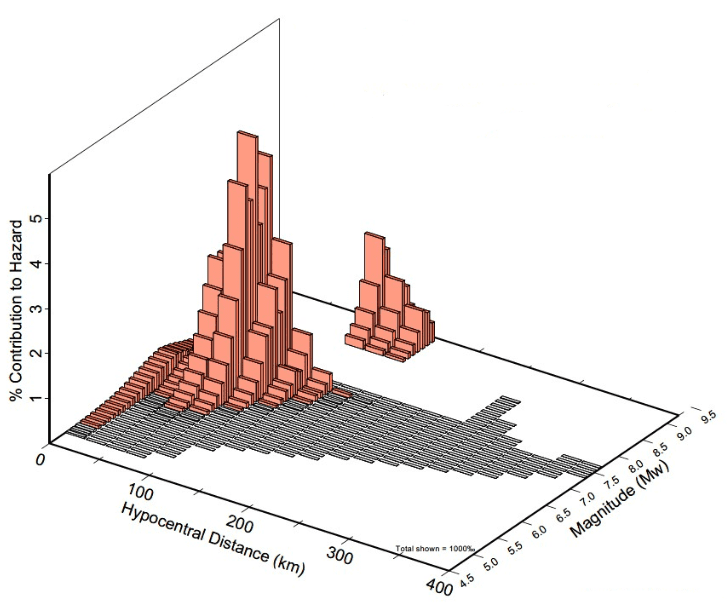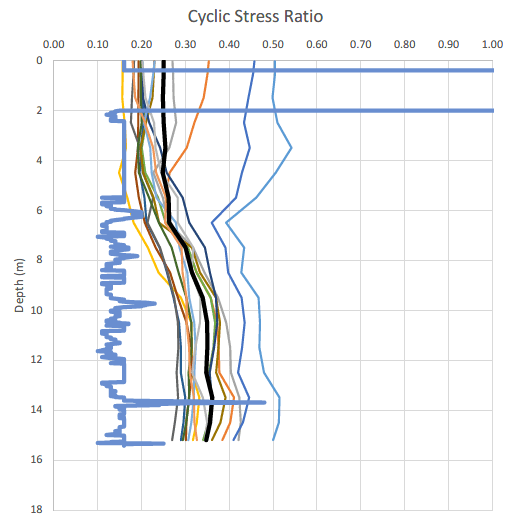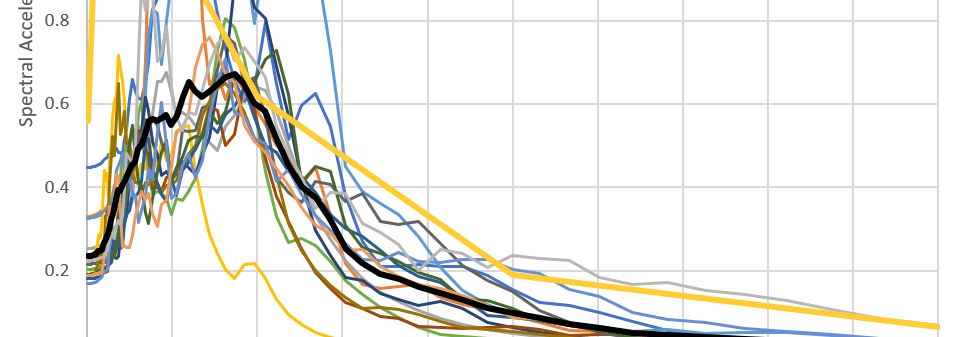SEISMIC DESIGN & GEOTECHNICAL EARTHQUAKE ENGINEERING
As much of British Columbia is seismically active, Ecora’s geotechnical engineers need to have a good understanding of earthquake resistant design. We have experience in the following:
Ground Motion Selection:
Ecora undertakes spectral matching and linear scaling. For a project requiring site specific ground response analysis or ground motions for dynamic structural analysis, we can use either method (or a combination) and would typically match to the NBCC 2015 Uniform Hazard Spectrum unless other site-specific PSHA studies have been completed in accordance with Commentary J of NBCC 2015.
Ground Response Analysis:
Where a project warrants a site-specific response (such as Site Class F soils or a structure with an unusual configuration), Ecora provides ground response analysis. This is typically conducted using 1D equivalent linear total stress analysis (e.g. SHAKE) conducted in the frequency domain. However, we can also provide non-linear analysis (e.g. D-Mod) if a project warrants it. For a higher risk project we can complete effective stress coupled analysis where the structure is incorporated in the analysis. We typically complete these using PLAXIS (finite-element) with either the UBC Sand or PM4 Sand/Silt constitutive model. We typically use a small strain Shear Modulus (Gmax) based on the results of SCPT or downhole shear wave velocity testing. Following this analysis, Ecora provides the project structural engineer with response spectrum plots (spectral acceleration versus period) typically compared with the code-generated spectra for various site class.
Liquefaction Analysis:
Ecora can either provide simplified liquefaction analysis whereby the Cyclic Stress Ratio (CSR) is determined using peak ground acceleration determined through code-based amplification factors or we use the CSR from site specific response analyses. The Cyclic Resistance Ratio (CRR) is typically determined using the Cone Penetration Test (CPT) results or the Standard Penetration Test (SPT) results and in some cases the shear wave velocity readings. For liquefaction analyses, we select the appropriate magnitude based on deaggregation results from the PSHA from which the ground motion parameters have been determined.
Seismic Slope Stability:
Newmark Sliding Block: In order to estimate seismically induced displacements, a staged approach is typically undertaken commencing with a “simplified” but conservative analysis methodology. A “Newmark sliding block” approach or an updated method from the Newmark family of methods such as Bray and Travasarou (2007) is undertaken as a preliminary screening method to estimate the amount of displacement. Yield acceleration is usually estimated using 2D limit equilibrium software (e.g. SLIDE). If the seismic displacement estimates are significant and beyond acceptable tolerances, then we undertake a more detailed level of assessment using Finite Element analysis.
Advanced Method (Finite Element Analysis): If required, advanced seismic ground deformation analysis is performed. For this, we use PLAXIS 2D. The PM4 SAND constitutive model (Boulanger and Ziotopoulou 2015) is used to simulate the dynamic response of soils with potential for liquefaction, cyclic mobility or softening. The input parameters for the PM4 SAND constitutive model are calibrated against the outputs of the site-specific response analysis (Shake or D-MOD).
Seismic Design of Retaining Walls:
Ecora undertakes seismic analysis for retaining walls for yielding and non-yielding walls and can provide seismic earth pressure diagrams.





